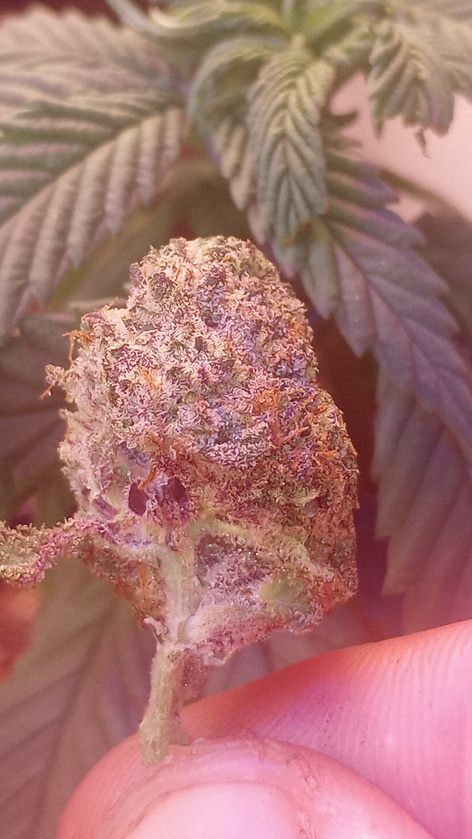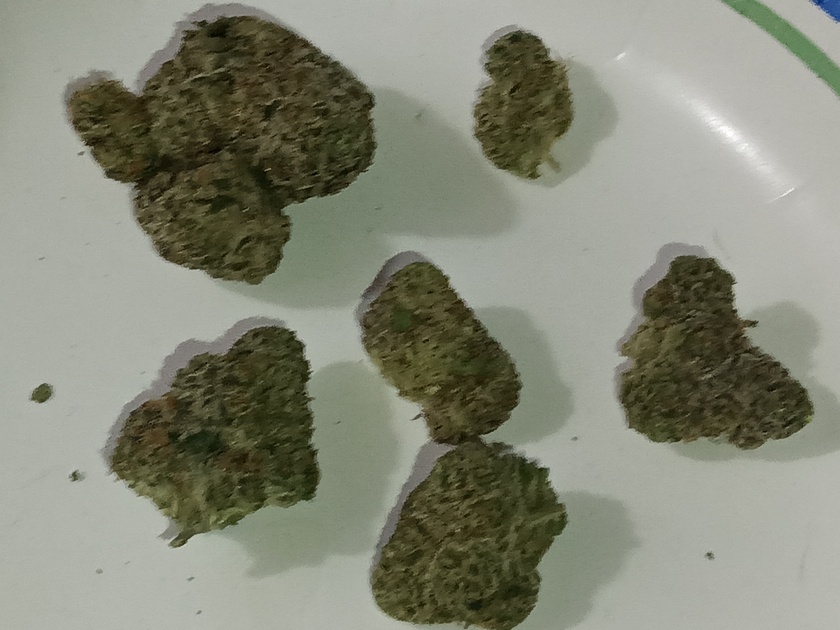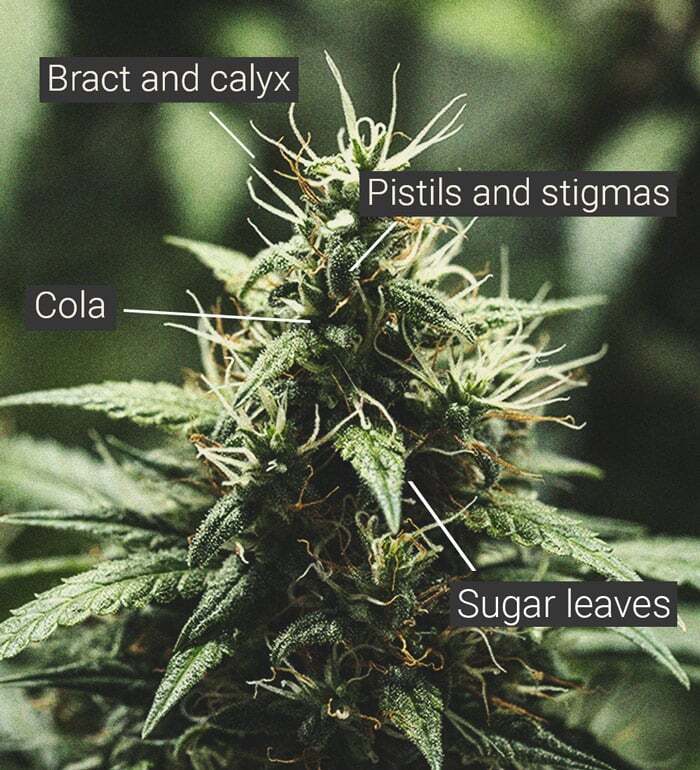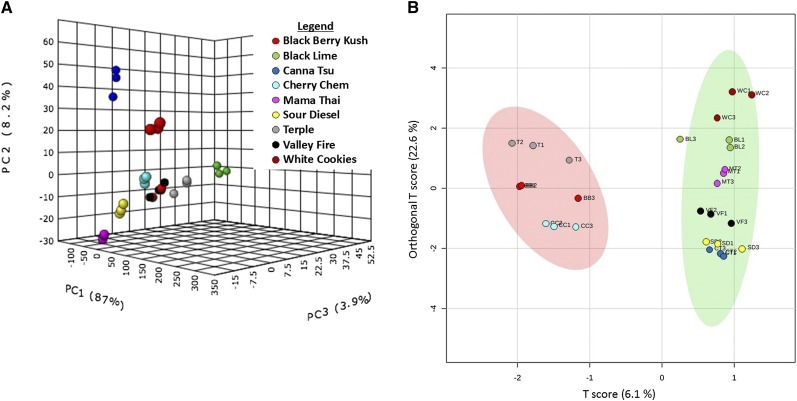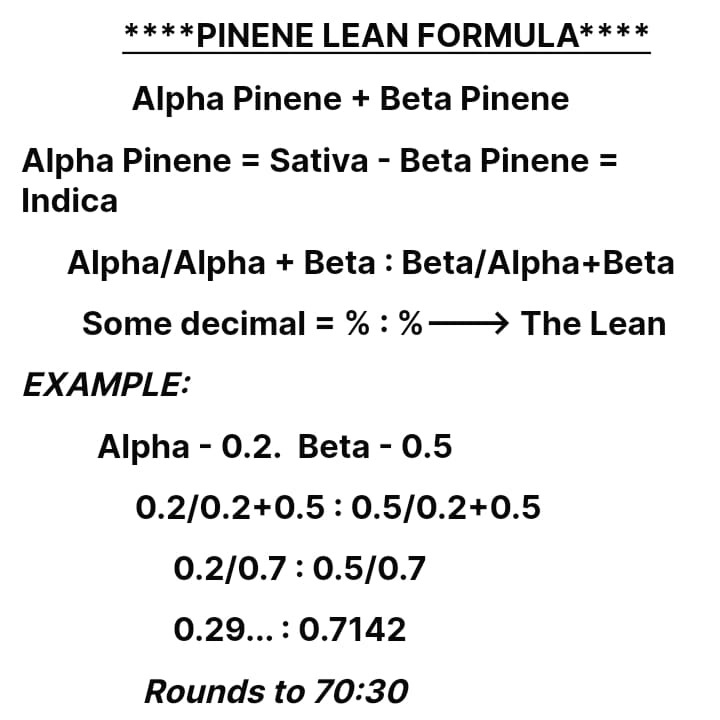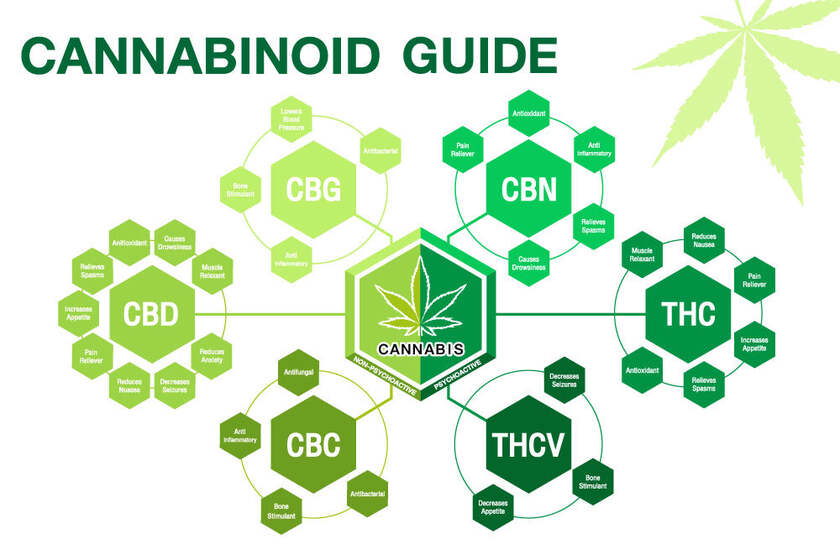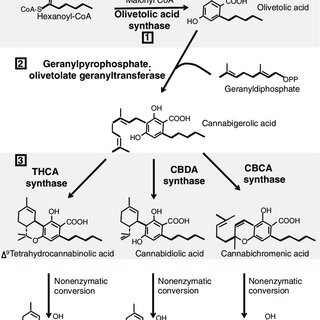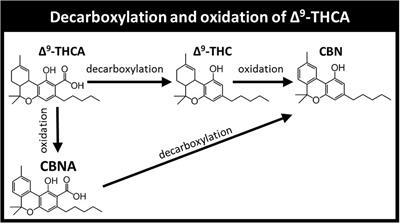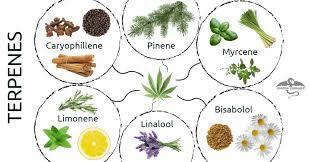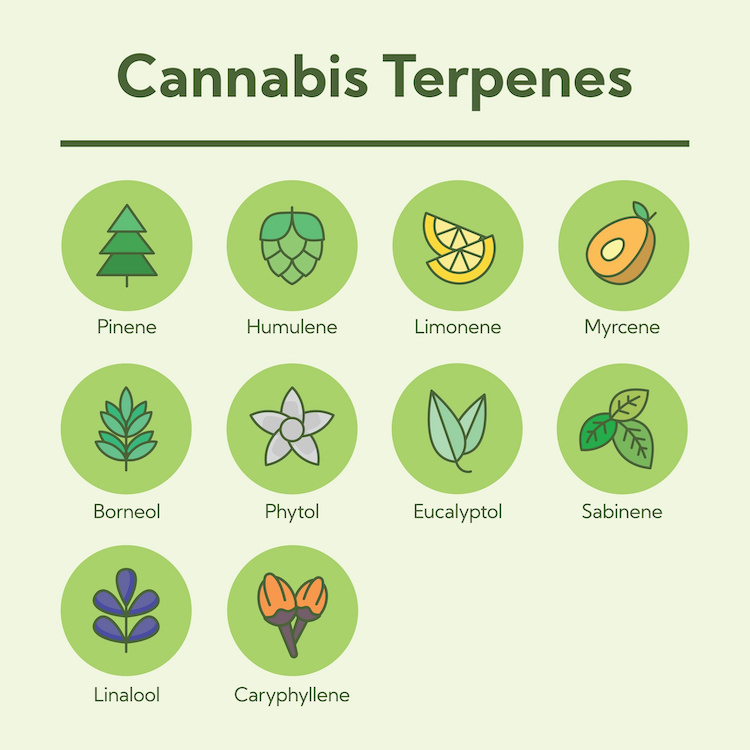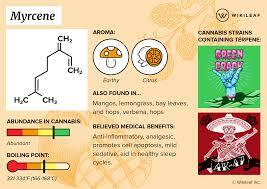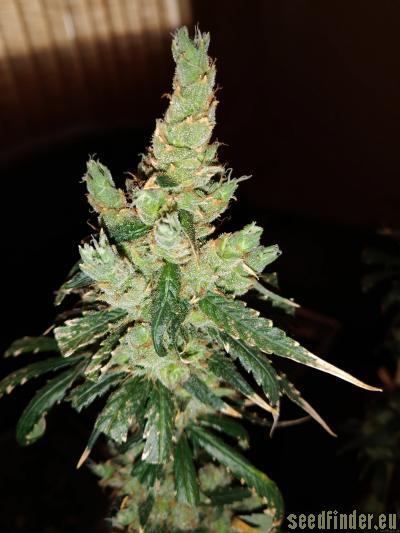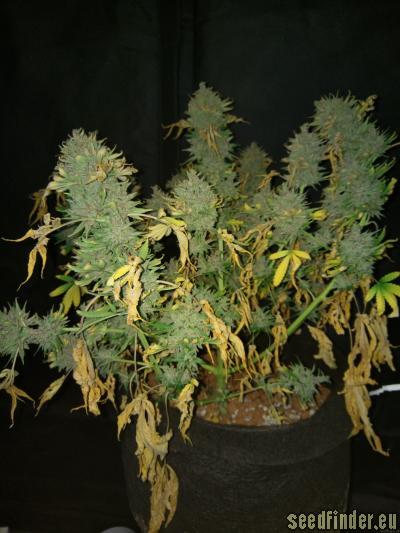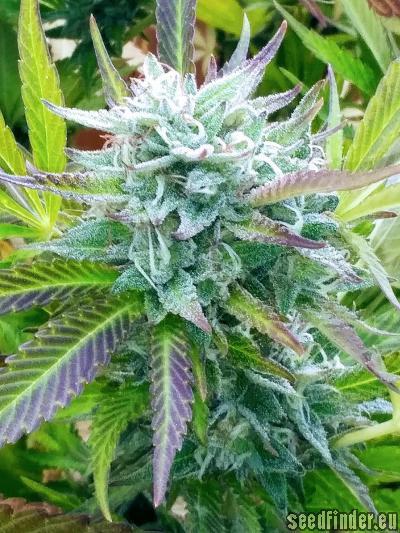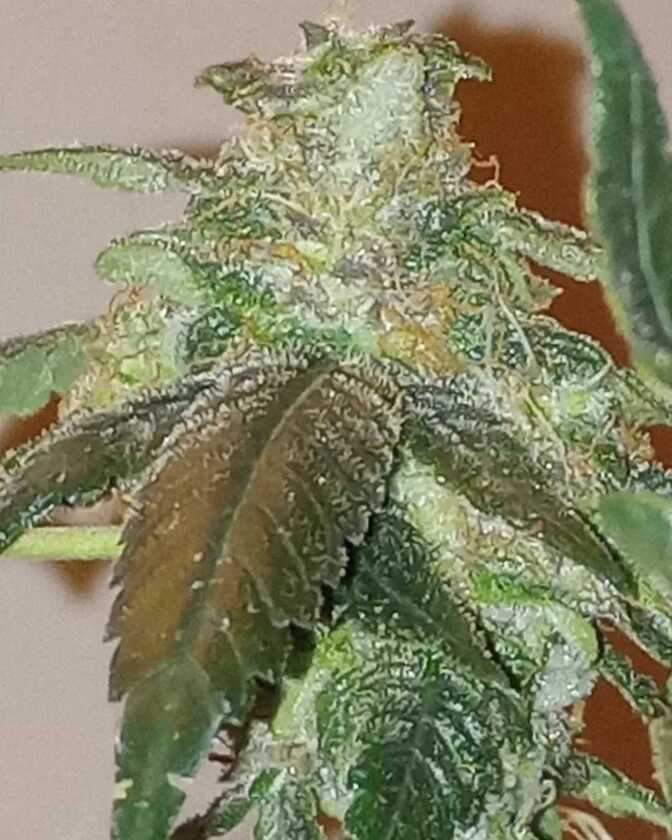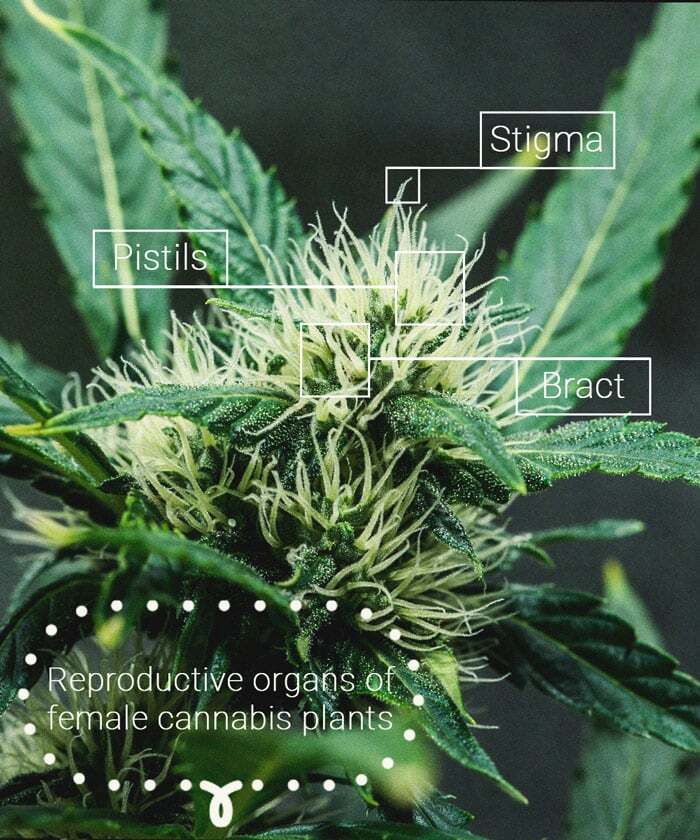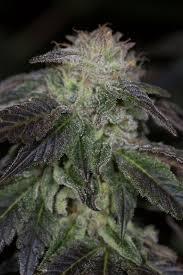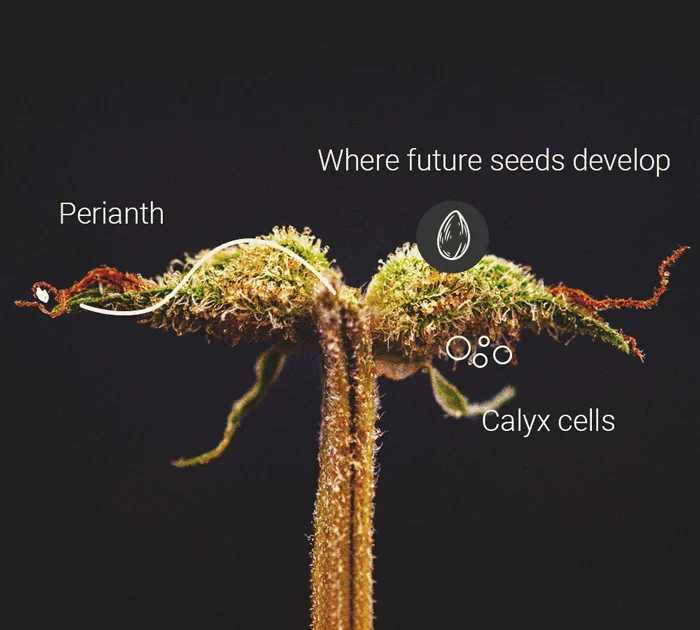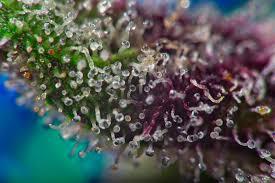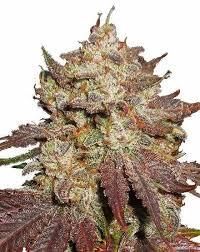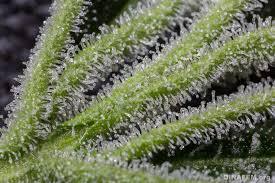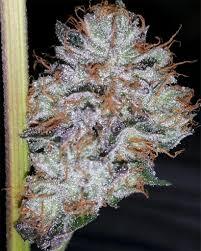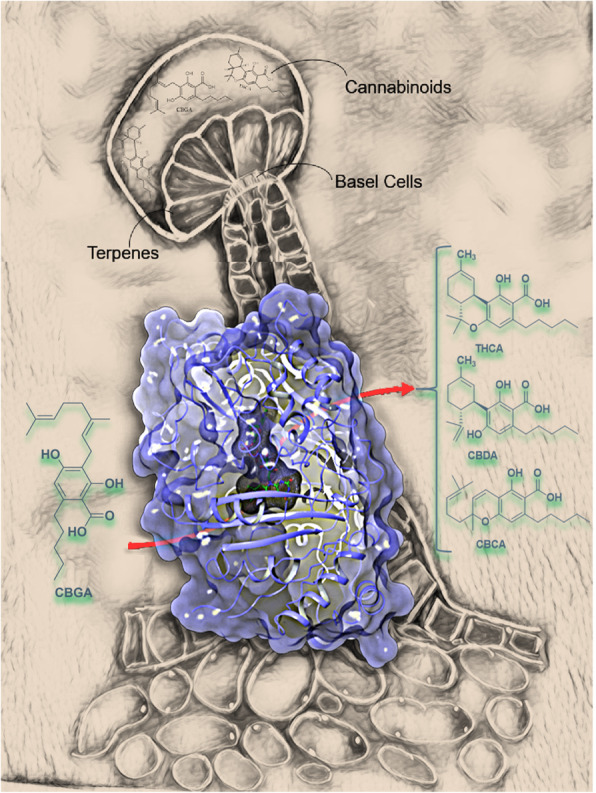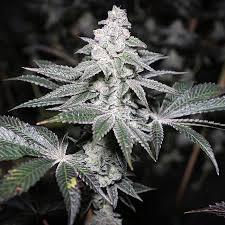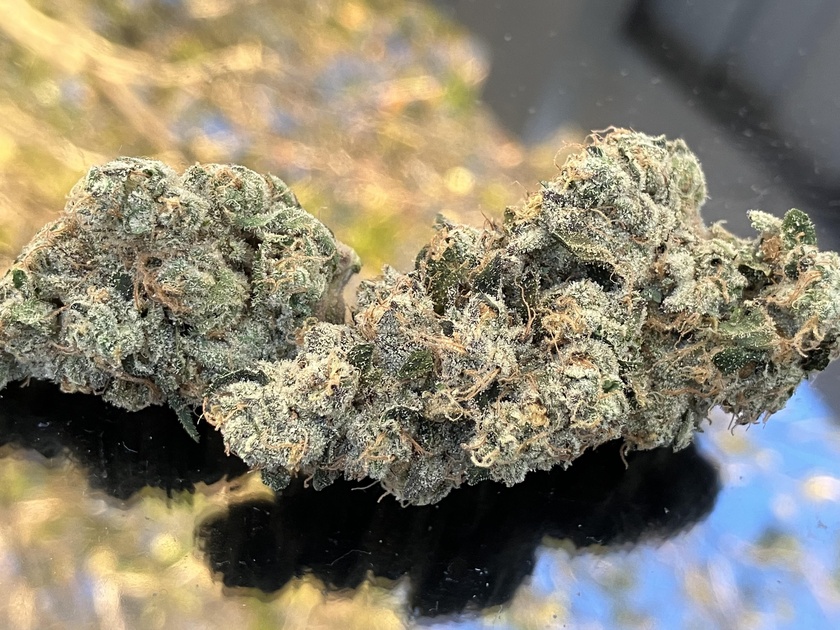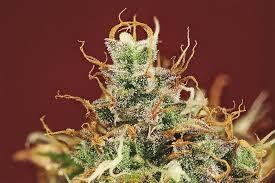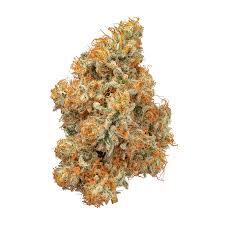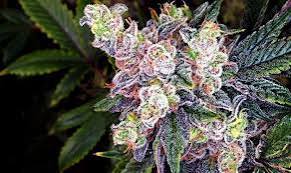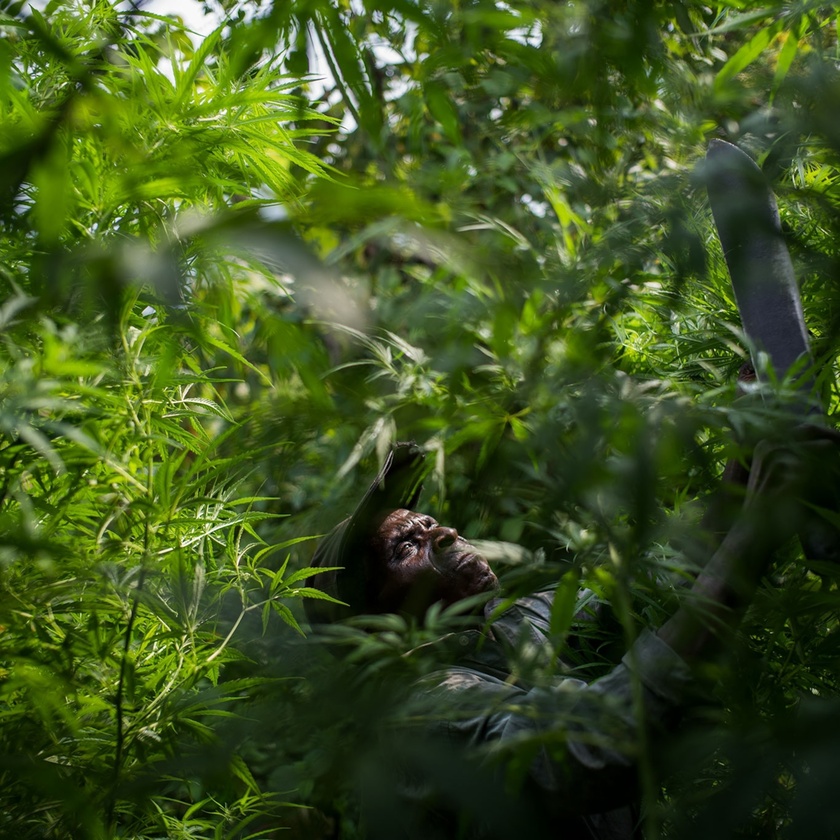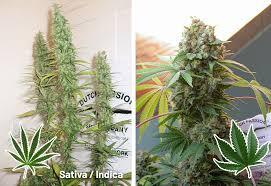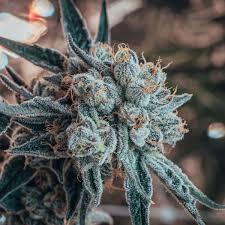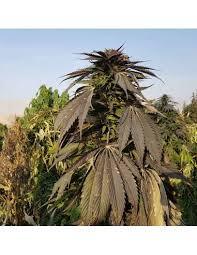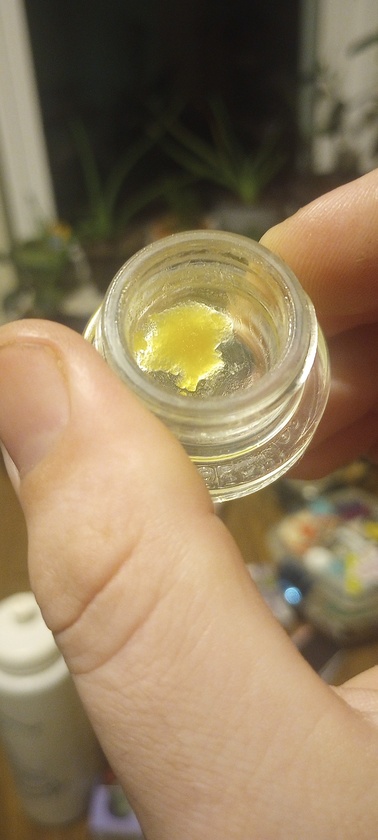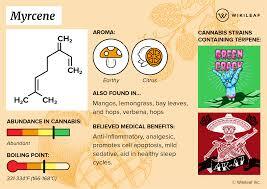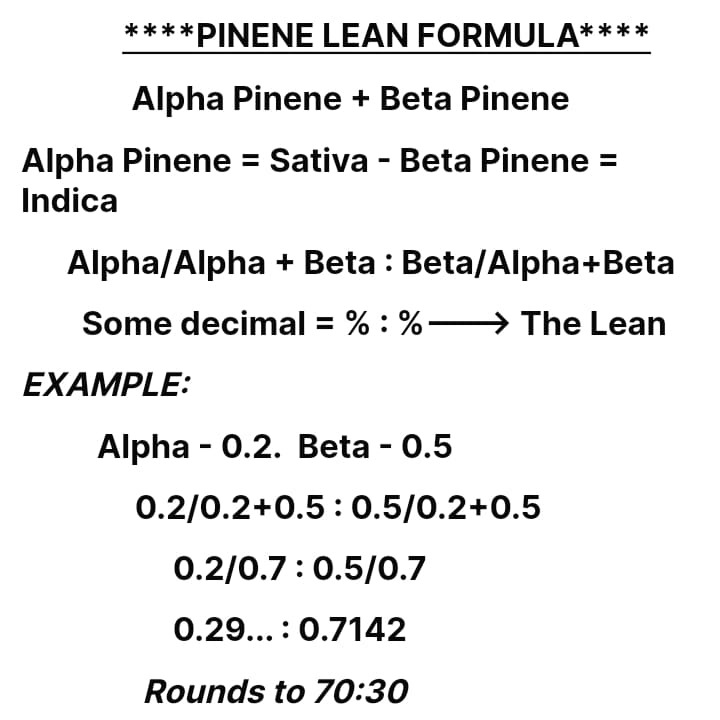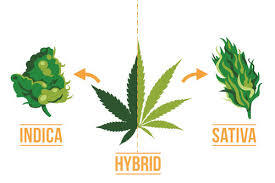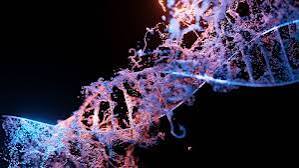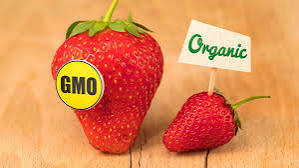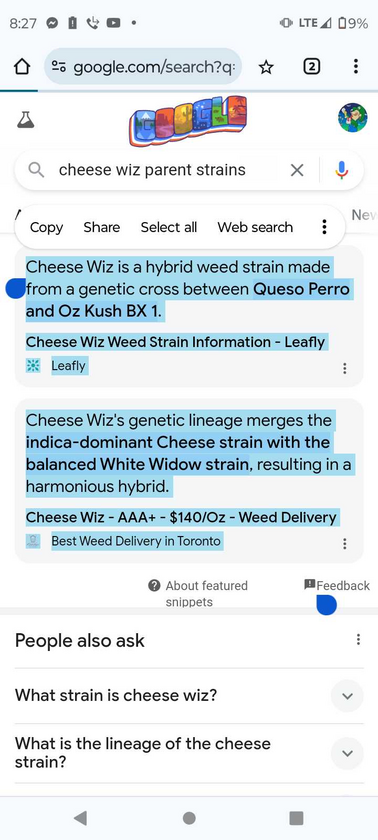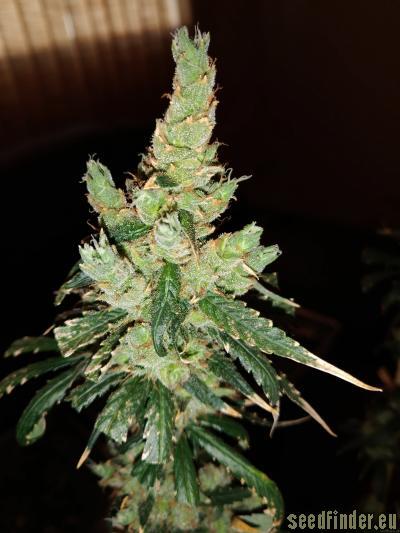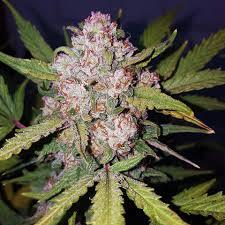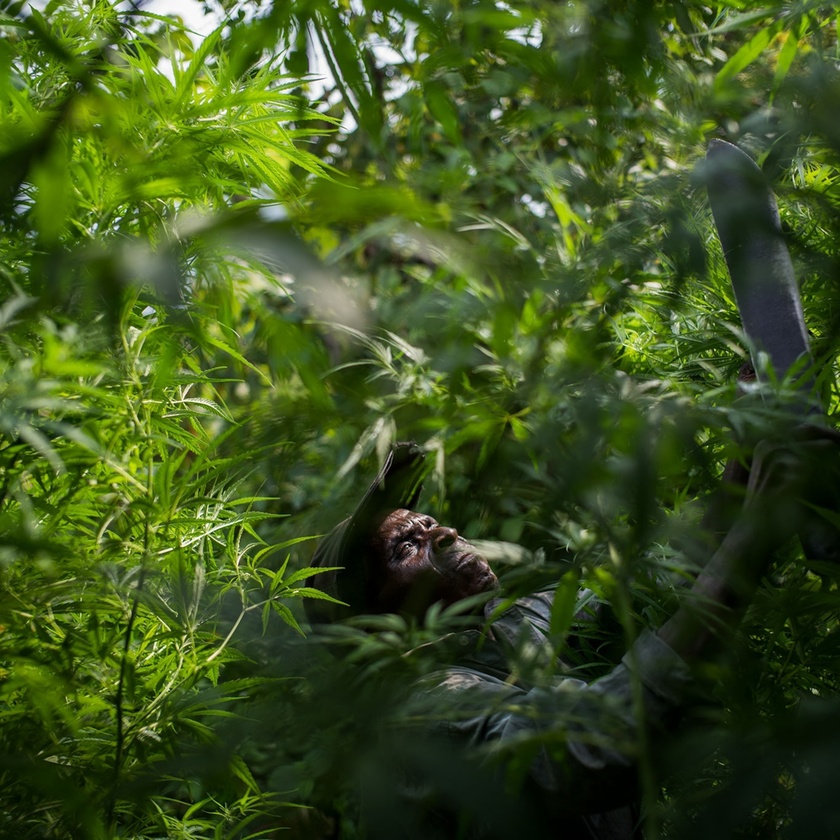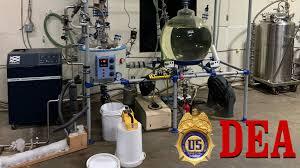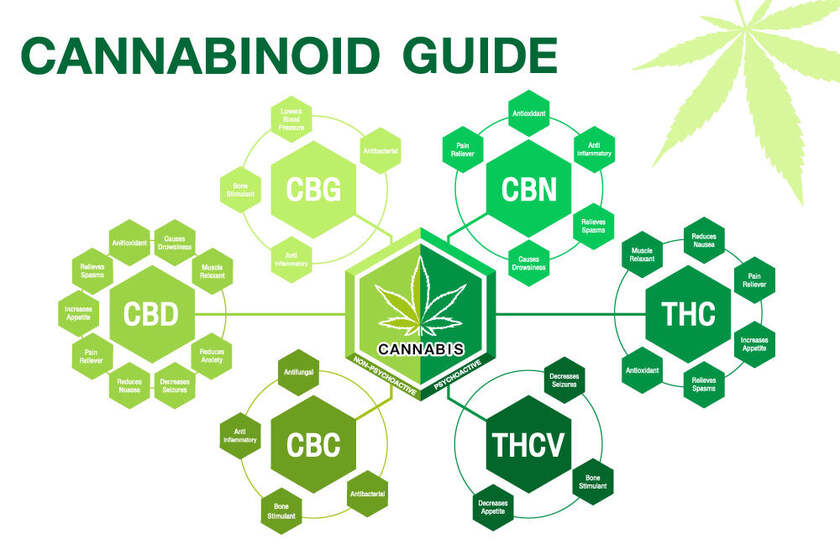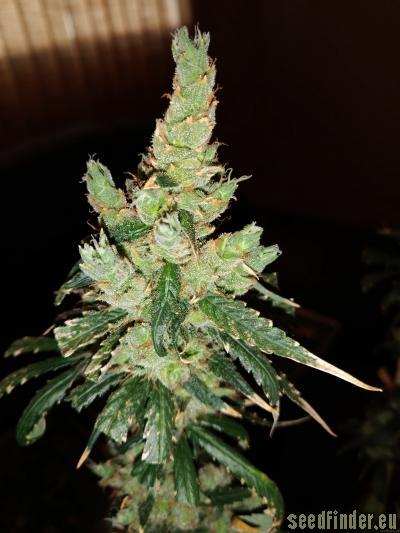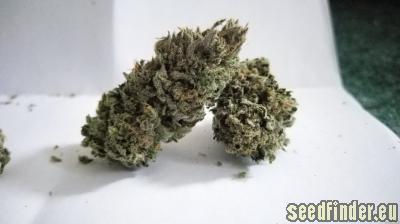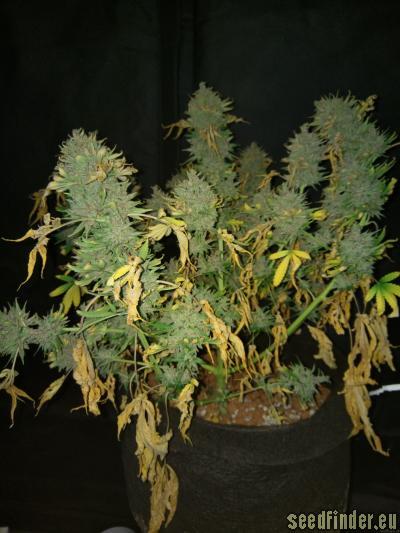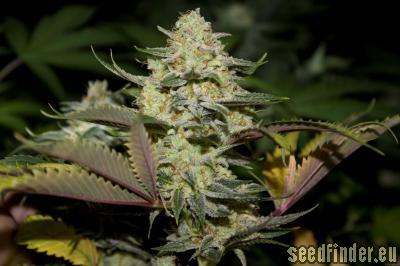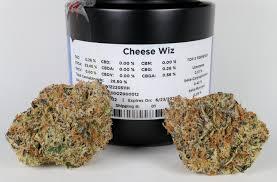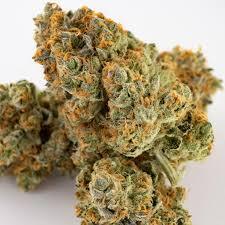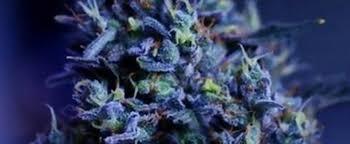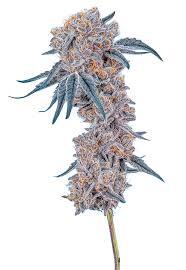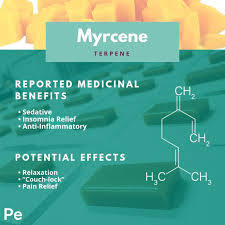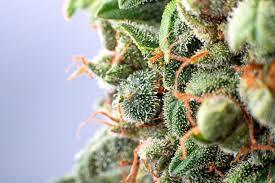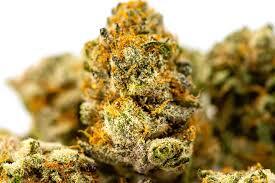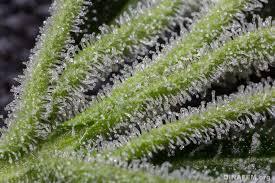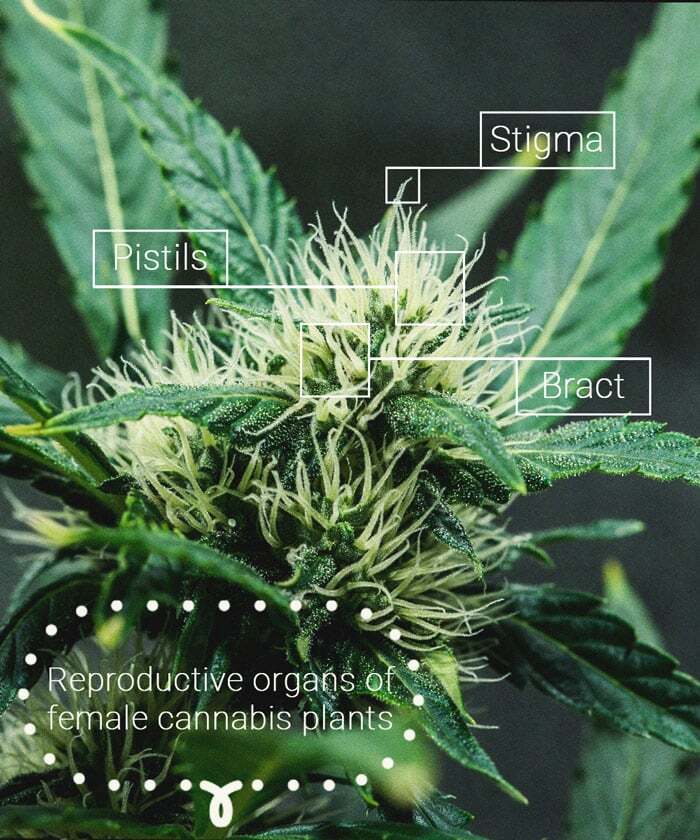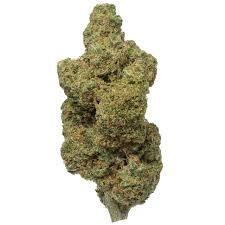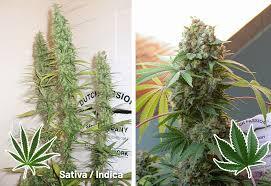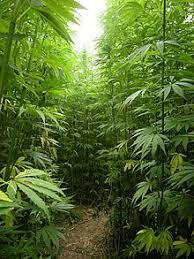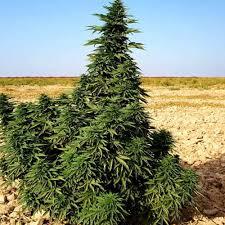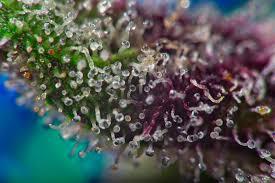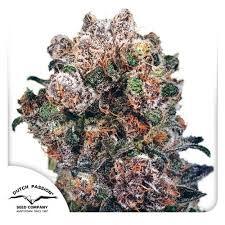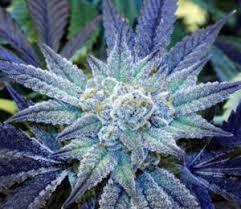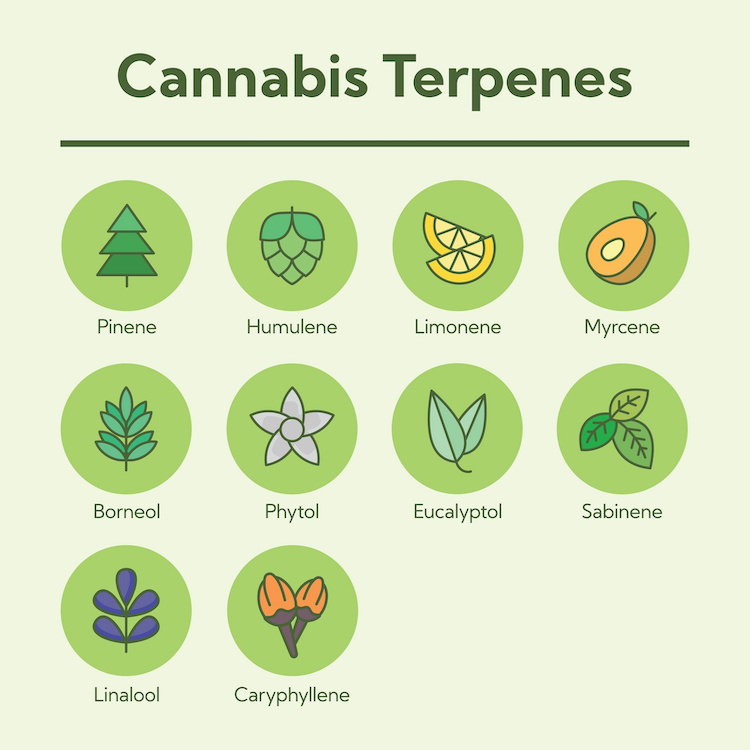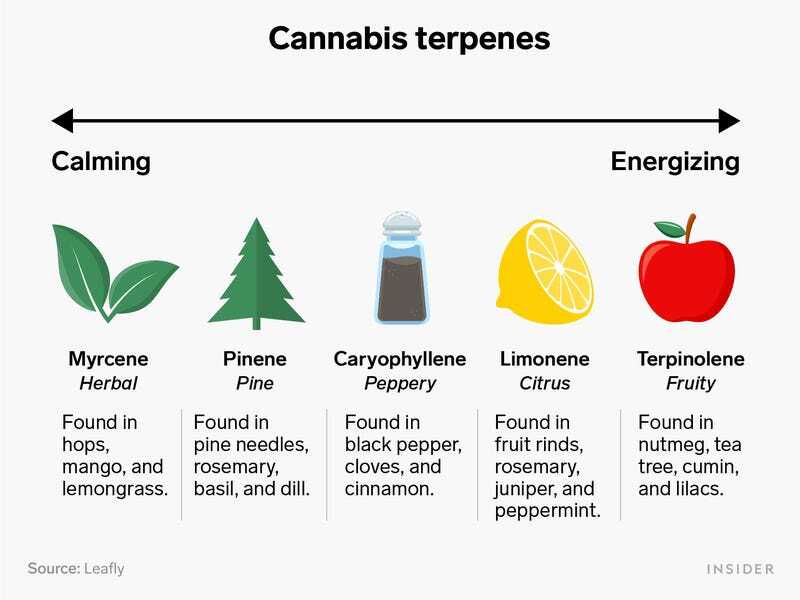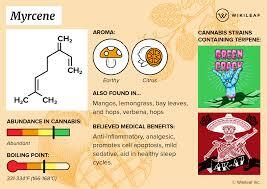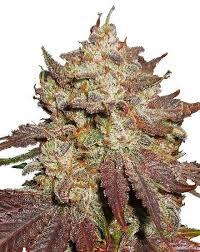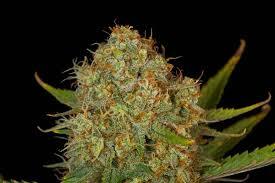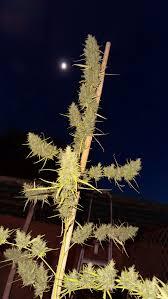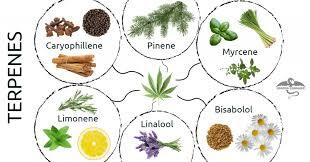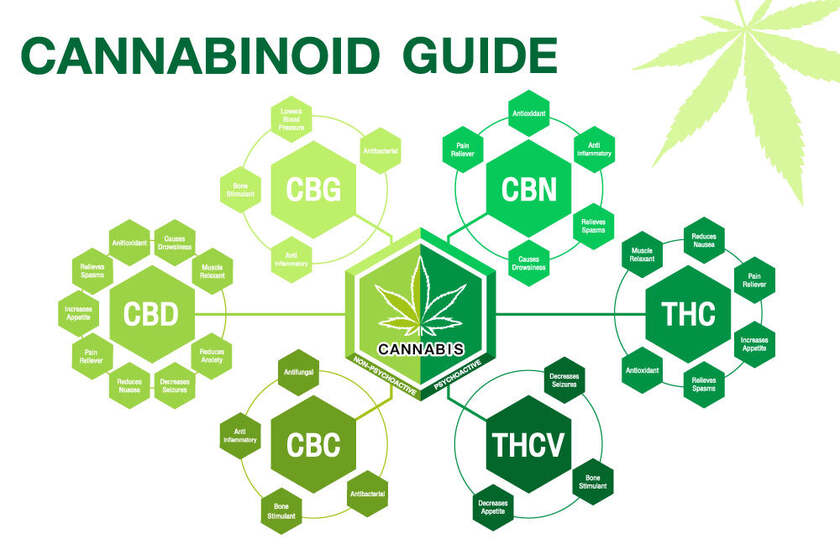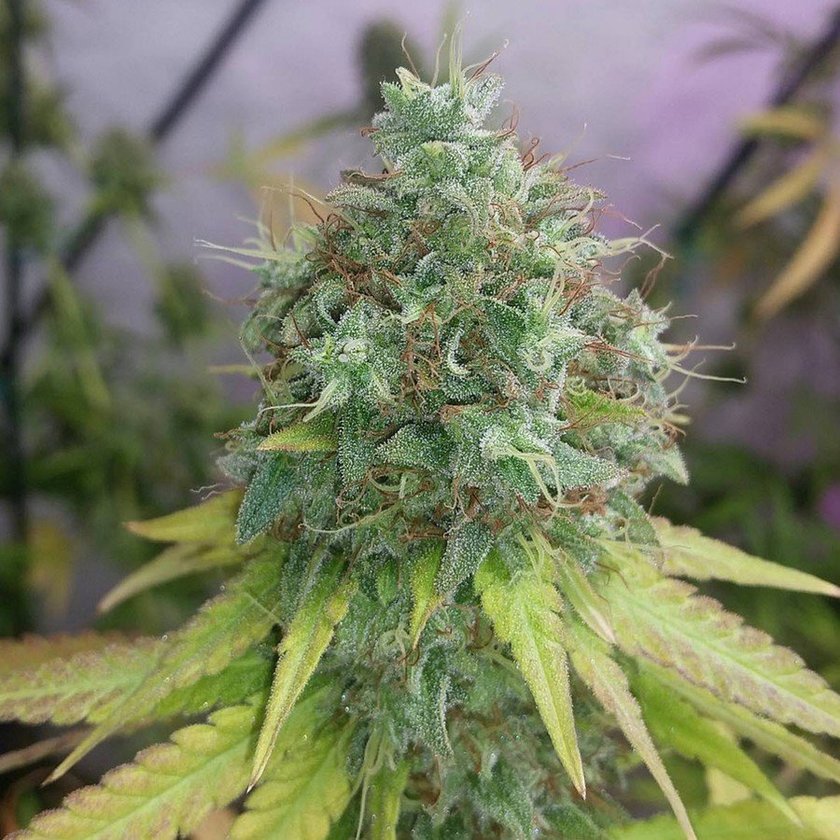
***I am not a Doctor nor am I a liscensed scientisscor the like. I am a camnabis communicator and use extensive experience in the cannabis indistry and my knowledge to help people understand modern Cannabis and the markets on which it exsists
G-13 Skunk has an interesting origin when the totality of the parentage is taken into consideration, much thereof being "unknown" or surrounded by mythos of governmemt cannabis from The University of mississippi, aka Ole Miss. It is said to have been the product of government seeking premium landrace indica cannabis and this was number 13 of several lines then lifted therefrom by some cannabis culture mythological hero.
While there are modern heros of Pot culture, i do not believe this one, largely due to my own analysis and the similarity of it to the "likely" lineage of G13 skunk. Being able to compare my review to the review of the likely contributers to g13 and compare that against skunk No1 using terpological D n A protocol i can get a much more confident reading of the parents of this phenotypical expression.
The way island mauie Haze presents is quite similar to the citrus orange rind of g13 Skunk. First to describe the taste and buzz of 'G13 Skunk' as it Stands from nature's Heritage in Live Resin form. This potent 1000 mg gram is what industry calls a 50/50 hybrid acts with both a dizzying psychedelic psychoactivity as well as a hardcore knock out relaxation. The creeper effect of G13 Skunk that permeates the phenotypical expression in both the sativa cerebral dizzying effect and the indica physical sedation. The effects set on slowly and last for hours on end.
This is an important time to discuss the dominant terpene in G13 Skunk. Beta Myrcene tests at 5.70% and in my opinion is what leads to the dizzying sedation of this strain. The Berry flavor of myrcene, it's less prominent aromatic presentatiin can be noted within the orange spiced musk citrus of the inhale. When myrcene is testing exponentially at levels beyond the present beta caryophyllene in this strain at 1.29% the myrcene begins to act on cb1 receptors intensifying the cerebral
Psychedelic psychoactivity. That is not to say that sedation of beta caryophyllene isn't enhanced by the myrcene, but that cb1 receptor activity is enhanced when myrcene is either not present with a from of BCP or on its own.
The intense muscele sedation from this1.29% would no doubt be useful in the management of pain or for individuals suffering muscular issues such as cerebral palsy or perhaps muscular dystrophy issues. I Could see this being used very heavily as a pain killer or sedative strain, or even see its application in aiding chronic pain sufferers through bouts of painful cancer or other disorders. The cerebral notes arent only dizzying in effect, this blend has an alert but bot energetic clear headed Ness that is accompanied by a calming of the mental as the sedation creeps up.
My batch tested on March 4, 2023 expiration date 03/04/2024 has a THC potency of 0.59%, THCa 78.26%, giving us a total cannabinoid level of 82.56%. Total Terpenes level out at 11.73% with the top 3 primary level terpenes being the only listed on the confirmation of analysis on the box being Beta Myrcene 5.70%, Limonene 1.41%, Beta caryiphyllene 1.26%. .
The initial aroma is a pungent raw orange rind aroma with some woodsy undertones when you pop the lid. WHEN YOU OPEN the sinuses up you can sense the limonene with a slightly spicey undertone. In this spicey hollow chrolinated swimming pool hall aroma is the Berry notes of beta myrcenes potency. There is a sort of hollowness to the aromatic profile relative to the Island mauie haze presentation. Islamd Mauie Haze is said to have a mango cat piss type smell which IMO is present as that hollowed put Swimming pool Hall aroma Under the orange rind.
The 50/50 analysis of this mash up seems to me to be a bit off and I have good opinion for this analysis which relates to the indica lineage of G 13 as well as the History of Skunk. Roadkillskunk & sweet Skunk are the main 2 phenotypes of Skunk no.1 available today. I believe the best explanation of genetics from the Skunk no.1 side comes from Sweet Skunk given the lack of super potent skunk piss presence in this aromatic profile. In that same aromatic presentation I can sense the presence of the likely contributer Island Mauie Haze in the aftertaste of exhale.
i do not ascribe to the government indica theory of G 13 that the federal governemnt sought the best landrace indica strains and created this super strain, which was thereafter lifted to the public by some 'Half Baked'the movie type ordeal. It's a lovely sentiment, and while i dont doubt research took place at ole miss to benefit the government researchers that would have likely certainly revealed to themselves for the government the true medicinal viability of cannabis. After all they were producing synthetic cannabinoids )ike dronnibinol and Nabinol since 1987. Meanwhile civilian researchers for peer reviewed research i dont believe it would ever be revealed as to the truth behind the governments studies at Ole Miss.
This is the legend, that the government produced this super strain and it was taken from the University by a certain person. One can see the references to Ole Miss in reference to cannabis culture in the pop culture movie Half Baked. In addition it has a funky sort of musky Diesel after taste that is part of the orange rind presentation of the inItial inhalation of G13 Skunks aroma correlating to that presentation in Island Mauie Haze. Island Mauie Haze is of an unknown lineage, but we know from the sativa expression in that dizzying effect and all the sativa landrace present that a pure sativa Haze doesn't quite intuitively make sense in a super creeper indica said to present as 50/50. I am referring the 4 way cross of landrace sativa that is the Haze lineamalgimation that is Haze genetics. Essentially sluth American sativa landrace crossednwith Asiatic sativa landrace.
I believe Island Mauie Haze is a contribution both because of phenotypical aromatic and taste having that orange rind smell like the Mango of Mauie and also has the ammonia aroma present in Island Mauie Haze. The dizzying effect of g13 Skunk i believe is part of g13 as well as the mauie cerebral buzz but not really an energetic lift.The exhale of this is super smooth ending with a very musky after taste on the tongue, a note some refer to as diesel.
However, I don't think it's as much diesel as it is as hollow musk similar to a metallic flavor or the smell of an indoor swimming pool. Though I can sense the deisel moreso in the smell that produces said taste.The aroma is of a musky Deisel Note, backed my Very earthy musk and sprinkled with hints lemon orange citrus when you open your sinuses up or really analyze the taste on your tongue.
The limonene is more notable alongside a spice upon inhalation. The Myrcene potency is notable upon inhale in a sensation in the eyes and an immediate rush, followed by a period of normality that slowly creeps into a sedated calm body buzz with an active but calm mental effect. There are very subtle woodsy berry flavors under the spice and musk upon inhale especially on lower temperature dabs.
The smell initially to me reminded me of an orange rind, a sort of less citrus version of orange, more pungent less bright morespur. . As I broke open the Resin it began to release the more complex terpene mixtures, the spice notes and woodsy ammonia type hollow indoor pool smell. No doubt that diesel hollow musk is a result of that massive over 5% Myrcene profile supported by 1.29% beta caryophyllene, the former making up nearly 50% of the total terpene profile.
This terpene profile as it stands on the box points to very strong indica genetics, however the presence of limonene not humulene or linalool in this 3 terp expression points to the possible, likely presence of sativa genetics; which played out as true when we dig into the landrace hybridization that is the genetic amalgimation creating G13 skunk. Columbian and Alcapulco Gold, Indian and thai landrace all sativa contribute genetic expression to this lineage. I am not toally correct abOut the Mauie Haze genetics, AS THEYRE UNKNOWN TO DATE. However i am certain of Haze presentation and reported Island Mauie Skunk reviews are a welcome reference as well. This profile is much more difficult to describe given the lack of my tried and true discernment if CBG ti CNGA ratio and presence or lack of the other minor cannabinoids being representative of sativa as that minor cannabinoid profile becomes more expressive.
Having only the top 3 terpenes I will have to look up the entire confirmation of analysis to finish this section of terpological discernment.As far as the experience is concerned I want to say I think this isn't really as much a 50/50 experientially as it is a heftier indica lean with Beta myrcene acting as an extremely psychoactive terpene given its exponential levels over beta caryophyllene at 1.29% with Beta myrcene at 5.70%. When the beta myrcene in a strain, even when paired with Beta caryophyllene at a significant level like this, the experience tends to get very heady.
The fact that this has such heavy body effect, almost makes the psychoactive cerebral note this produces a near nauseating experience at times resulting from the sensation in the eyes that creeps into a dizzying sensation of sedation. The sedation can get so heavy along with the myrcene playing its havoc between cb1 and cb2 receptors, being so psychoactive on those cb1 receptors it can be a dizzying experience. Not like a drunken back spin, but very near a description like that. Where the alcoholic experience that leads to that nausea isnt able to be controlled and just leads to instant vomiting the cannabis experience tends to be more controllable.
I find it interesting that strains with such high levels of myrcene produce these cerebral effects when myrcene is exponentially greater than the beta caryophyllene. It doesn't negate the sedating cb2 action, this exponential level just tends to pull the psychoacitivity back with its relaxation as the buzz creeps on into sleepy sedation and waking up to munchies.
This weird sedated psychoactive soon dissipates and lulls one into a straight heavy bodied sedated experience that I often end up sleeping over. I would by no means reccomend this strain for any type of Novice user or for day time use even for an experienced user. It would be an excellent strain ImO for muscular disorders causing discomfort and pain as the muscle sensations are deep and relaxing, as well as being an ideal candidate for pain Management. People like my aunt who suffers severe pain from multiple disorders including fibromyalgia would benefit from this strain. After the cerebral dizziness wears off about an hour after the dab, a period of munchies madness sets in for myself, followed by straight sedated relaxation that puts my put to sleep immediately.
G 131has a very complex histroy and it is directly associated with the Cannabis mythology of the Weed grown by FDA contractors at the university of Mississippi. I have discussed this cannabis growing facility instituted by the government, while they restricted any and all cannabis research by anyone except government contractors. The individuals studying cannabis for peer reviewed purposes were almost always pointed towards or given sub par cannabis with which to work to find medical viability.
The FDA thereby controlling the narrative around cannabis viability, because if the studies are allowed but not finding results it cant be the FDA now could it? Plausible deniability which failed horribly in minds ofopeople.like myself but there is still a plethora of mythology surrounding cannabis created at this secretive lab.
G 13 is said to be one of the famous strains created on the back on the federal government looking from the ultimate pain Killing strain.This is said to be short for government indica no 13. Some rumor states it is number 13 of a handful of Afghani genetics selected to be used an a pain killer then,.myth has it it was taken and bred fornthe masses by some hero of cannabis History. The interesting thing I thing to note about g13 and skunk is both Strains mythology regarding the uS government and uS military.
Many of the Afghani genetics that lend to skunk as well as G 13 were hoarded out of Afghanistan in the empty shells of AK 47s by soldiers.There's reason the US market is more heavily influenced by Eastern hemispheres genetics than by genetics from the south american continent. One being the lower quality of Michigan cannabis in south america for a variety of reasons but also heavily tied to the fact that US soldiers weren't in South America the way there has been a US presence in Afghnaistan, the Himmalayas and the asiatic Tropics.
Nobody is certain of the real original genetics of g 13 but i dod find one site claiming to know the lineage has derived from an Afghani crossing with Maui Haze Creating Afgoo, from which this G 13 Is derived.It is said to have initially been a pure indica strain but today tests more along the 70/30 indica dominant line. Given the extreme sedation of this strains child g13 skunk, and knowing what I already know of skunks histhistory, I believe it makes sense that this is more Indica Than anything. That heady dizzying effect I can certainly see derived from a sativa Maui lean, not my favorite sativa effect to be sure. I say this because I've never has said experience, the sedation and dizzying cerebral effect from any skunk derivation, and the potency and purity of the indica genetics would push aside the strong but less so impact of skunk no.1.
Skunk No 1 has a history that is just as complex and shrouded in Mystery as the G 13. I believe the levels of beta myrcene present make more sense to explain to heady cerebral dizzying effect coupled with the heavy sedation than does the presence of the more sativa leaning skunk Cultivar of today's market,, sweet Skunk. Although the super potent skunk aroma of roadkill skunk is not present in the aromatic profile so I am torn between if it is sativa impact from sweet skunk or is simply the myrcene acting from the roadkill skunk potency. The aroma preduced by G 13 SKUNK is more smooth than that of roadkill skunk, but I have trouble labeling g13 skunk as 50/50, but rather is more like a 65/35 or 60/40 with myrcene providing said dizzying effect.
This would be sensible to me even with the more sativa leaning sweet skunk present rather than roadkill Skunk, if it weren't for the lack of potent skunk in this live resin. One must remember the intensity of the purity of live resin duento the procedure by ehich it is made. The plant is flash frozen as harvest to save the terpenes and cannabinoids and flavinoids at their purest most natural aroma and taste, meaning ifnriadkill skunk was here we should sense it especially with the deisel of another heavily indica influenced genetic like G13.
The flavor and smell of this live resin also points me toward the myrcene providing said dizzying effect as a side effect of the uber potent myrcene alongside the potent sedation, that musky Diesel after taste. I think of roadkill skunk were present as the skunk no 1 used it would be much more rank and rotten.The fact that Myrcene is so heavily present isn't surprising given all the Landrace genetic in this cross. We have both indica Adghani landrace supposedly creating G 13 Skunk as well as the landrace trilogy creating Skunk no 1, Acapulco gold x Columbian gold x Afghani.
The fact that myrcene is the most prominent dominant terpene in cannabis, and we have a supposedly super bred indica which is relative to myrcene in a characteristically aromatic manner speaks to the OG landrace natural genetics that contribute hereto. Myrcene is potent in skunk phenotypes however I think that the amplofication of myrcene is likely to express in g13 the way it does here in g 13 skunk. I say this because I ddont think myrcene is product of natural landrace genetics at that level we see here. Rather, I believe the mythology of g13s creation, uber scientific fuchery with the indica genetics speaks to the same myrcene amplification seen in the scientific fuchery of cannabis in the 2000s grown indoors, where myrcne levels heightened exponentially when the DEA chased a majority of outdoor cannabis griws into indoor situations allowong science to meet cannabis formally on the illicit market for the forst time in great force. I believe said charscteristic is result of crossing particular phenotypes which can make the beta caryophyllene sedation helper much more oriented towards that psychoactive dizzying cerebral effect.
With a 5.70% myrcene level nearly half of the total of over 11%, the myrcene definately adds a dizzying cerbral note, but the heavy indica lean overall keepS that dizziness as a sort of under handed effect, coming and going in the beginning of the high from g13 skunk eventually lulling easily into the rest of the sedating effect causing deep sleep and relxation in the musceles.We have to remember that even though myrcene is often thought of as sedative, it is present equally in all strains of cannabis as the most prominent dominant terpene, appearing as dominant in 47% of today's cannabis on the shelf.
Skunk no. 1 has a very interesting history that has to deal directly with the real OGs of the cannabis market during the years of prohibition,, carrying the genetics from the u.s. to the Netherlands and allowong numerous geneticists to have their hand at this plant. Skunk No.1 today is a stable homogoneous plant that is very easy fornbeginners to grow and work with, though many argue that today's Skunk has lost its original namesake, the rotten dead skunk ass aroma that is itsnamesake. Many don't even like theeconceotnofnthe sweet skunk produced in the 80s in the Netherlands which has a smoother less skunky aroma. This is why I think it would make sense sweet skunk is the phenotype of skunk No1 present rather than roadkill skunk.
Many believe that the original skunky rank genetics of skunk No1 have been lost to hybridization alongside the feminization of seeds.There are many OG Growers who recognize the importance amd ofamdf feminized seeds, but also note the importance of having male pollination and creation of seeds that are not guaranteed feminized. Many people mistaking believe that it is only female plants that are used to create the genetics that flood the markettoday, but this is false misled thinking, but this is another subject it is important to know however, male plants are definately used to breed in and out certain genetic lines to female plants as well as in creation of mama and papa plants of various phenotypes.
Skunk No 1 has 2 Main varirities that exsist still today on the market, but even this is argued by OG growers.The skunk strain was a product of the 70s and 80s from Sam the seedsman as well as Neville Shoemaker. Same took a cut to erupoe to the Netherlands in the 80s and blended the strain under the name cultivators Choice into the current exsisiting sweet skunk. It was this work by Sam the seedsman and Neville shoemaker, who is said to have created the roadkill skunk phenotypeRoadkill skunk named after the smell it produces. Skunk is indeed named as it is because ofnthe intensity of aroma one plant can produce.
There are many different phenotypes of skunk today like the infamous Exodus UK Cheese skunk this blend was developed during the otts in England if. I do recall properly. I remember seeing a national geographic specificially about the potency if the indoor grown cheese Skunk as the bobbies referred to it.
This makes sense iMO that the genetics of G13 would be the only ones i flund besides the argument that it was A premium produced Afghani Cultivar created hy the federal government in an attempt to create the perfect pain killer at the University of Mississippi. This may in fact hold so some level of truth,, but it can not be ignored that if there was this type of intense real research taking place at Ole Miss, it was done so exclusively for government purposes as nearly all studies of real peer review ended up as null because the cannabis was so poor quality a difference couldn't be established between placebo and control for said study.
Rather than this mythology of G13, I would like to use my terpoligcal analysis to pick apart this genetic amalgamation of landrace genetics g 13 is said to be a cross of Mauie Haze x Afghani, which produces Afgoo. That is said t. Lead to the produ tion of G13. If you want the mythology of the G13 strain as per the government development it goes as such.
The government was said to be seeking an ultimate pain Killing strain by seeking out the best indica phenotypes from around the globe, g 13 is said to be the 13th sample.In my opinion using terpological analysis and simply intuitive the genetic relationships it seems most likely that Mauie Haze x Afghani landrace is indeed a contribution to g13 skunk. In the skunk we have similar parent genetics to what we see in mauie Haze x Afghnai. Mauie Haze Is a 4 way cross of Indian lamdrace, Thai Landrace Columbian gold, & alcapulco Gold. Mauie Haze x Afghani landrace gives us afgoo turned to G 13.
There is also a connection between Haze genetics and this g13 skunk line is its dominant terpene which in Haze is myrcene. The dominance of myrcene in gaze makes sense given the exponentially heightened beta myrcene which tests at an exponentially increased level compared for exmaple to a third prominent terpene beta caryophyllene which is testing at 1.29% in this indica dominant hybrid. Myrcene tests at 5.70% of a near 12% terpene profile. The fact that Haze is both lineage to g13 and has heightened myrcene levels speaks to the heightened likliehood of it actually being the parent genetics.
In addition another terpene that speaks to this amalalgimation is the presence of Limonene. This is important here to note alongside the skunk genetics which is a 50/50 contribution of sativa to indica that actually presents as a 65/35 to a 70/30 indica dominant hybrid. Not only are thes eterpeneetsimilarly expressed in Haze and G13 skunk, but the landrave genetics contributing thereto also match up nicely.
In both the Mauie Haze x afghnai cross making g13 and the cross creating Skunk, the other half of G13 skunk crosses together alcapulco Gold, columbian gold, Indian Landrace, Thai landrace.It is also not uncommon to see an exponentially heightened beta myrcene profile given extensive hybridization. Given that myrcene appears in 47% of cannabis as dominant, when we hybridized especially hybridizing landrace cannabis we increase the likliehood of both getting myrcene dominance in the profile ofnl the offspring. Myrcene is a terpene most newerr smokers and even advanced cannaseurs often misinterpret the experiential application of and assign to improper contribution to experiential profile. Myrcene is not a sedative, but it is an analgesic and when it appears as it does in G13 skunk with Beta Caryophyllene the Myrcene causes THC to act upon cb2 receptors causing an enhanced sedation of the beta caryophyllene.
However, here we have beta caryophyllene at 1.29% and beta myrcene at 5.70%. This exponential level of myecene to beta caryophyllene tends to cause partial action on cb1 receptors similar to myrcene appearing on its own or with Trans caryophyllene which expresses a less sedating totally unaffected by beta caryophyllene IN EITHER FORM beta or trans it tendsnto acts extremely psychoactively. We must remmember too trans caryophyllene is a form of and the most common form of beta caryophyllene in cannabis.
Another terpene that directly relates to terpological discernment I have developed is the presence of limonene as a Dominant terpene. Limonene expressing as prominent in this indica dominant hybrid. The important thing here is that limonene has an experential addition that is sedating, but the aromatic presence is more representative of sativa profiles being bright, and expressive like the jungles from which sativas hail. The fact that Mauie Haze contains the same 50% of genetic lineage as the second parent of G13 Skunk. SKUNK are the same parent genes, initially being alcapulco Gold x Afghani and later Columbian Gokd was added.
Skunk was developed in the 70s & Sam the seedsman skunkman took a strain to tge Netherlands in the 1980s selling seeds under the name.cultivators choice.This process in the Netherlands developed 1 of theb2 phenotypes of Skunk no 1 on the market today, sweet Skunk. The other skunk was produced state side by Neville Shoemaker as Roadkill Skunk which had a much more potent rotten rank dead skunk aroma. Skunk isnindeed named after the extremely similar aromatic profile to that of the smelly stripped animal. HOWEVER, many geneticists argue EVEN roadkill Skunk doesn't push the same aromatic potency as it did In The Past, making many cannaseurs believe smtrue skunk no1 genetics are long gone, an idea to which i do not ascribe. I believe that as Derived as skunk genetics became, creating all sorts of derivations that the original Skunk no 1 phenotypical expression is buried somewhere in a seedbank waiting to be uncovered through the right care and lighting.
Limoneme is a terpene that does appear in dominant levels in indica dominant hybrids like this which have significant sativa profile contributions. I have noted this in other strains which have diminished indica expression shown through lower terpenes levels characteristic of indica representation, like seeing beta caryophyllene diminished that alongsidenthis diminished indica expression i see a heightened level of limonene.
I am thinking specifically of a recent review incompleted on Lilac Diesel which has a 0.2,% beta caryophyllene and equally diminished linalool and humulene, characteristic of indica using terpological protocol. In that lilac diesel the one teroene which expressed at levels alongside the sativa teroenes at secondary and primary levels was limonene. While it has sedating effect, it is aromatically aligned with sativa terpenes as it is the only indica aligned terpene which lacks a. Undertone of woodsy, earthy, musk or deisel undertone. Limonene has a profile more relative to pinenene.
I would also be very interested to see what the ratio of Beta pinene to alpha pinene expresses as, because the ratio thereof tends to represent an approximation of the ratio of indica to sativa, indica relative to beta pinene and sativa relative to alpha pipinene. The 50/50 analysis of this mash up seems to me to be a bit off and I habe good opinion for this analysis which relates to the indica lineage of G 13 as well as the History of Skunk, namely Roadkillskunk & sweet Skunk the main 2 cultivars available today of Skunk no 1. I believe the best explanation of genetics from the Skunk no.1 side comes from Sweet Skunk. I have this anlysis because the live resin doesn have the super dead skunk smell of the roadkill skunk.
The exhale of this is super smooth ending with a very musky after taste on the tongue, a note some refer to as diesel. However, I don't think it's as much diesel as it is as hollow musk similar to a metallic flavor or the smell of an indoor swimming pool. Though I can sense the deisel moreso in the smell that produces said taste. The aroma is of a musky Deisel Note, backed my Very earthy musk and sprinkled with hints lemon citrus when you open your sinuses up. The smell initially to me reminded me of am orange rind, a sort of less citrus version of orange. As I broke open the Resin it began to release the more complex terpene mixtures. No doubt that diesel hollow musk is a result of that massive over 5% Myrcene profile making up nearly 50% of the total terpene profile.
This terpene profile as it stands on the box points to very strong indica genetics, however the presence of limonene not humulene or linalool in this 3 terp expression points to the possible, likely presence of sativa genetics.limonene tends to express more.potently alongside sativa genetics even thkugh it is charcteristic of indica terpene expression.
This profile is much more difficult to describe given the lack of my tried and true discernment if CBG to CbGA ratio and presence or lack of the other minor cannabinoids being representative of sativa as that minor cannabinoid profile becomes more expressive. Having only the top 3 terpenes I will have to look up the entire confirmation of analysis to finish this section of terpological discernment.As far as the experience is concerned I want to say I think this isn't really as much a 50/50 experientially as it is a heftier indica lean with Beta myrcene acting as an extremely psychoactive terpene given its exponential levels over beta caryophyllene at 1.29% with Beta myrcene at 5.70%.
G 131has a very complex histroy and it is directly associated with the Cannabis mythology of the Weed grown by FDA contractors at the university of Mississippi. I have discussed this cannabis growing facility instituted by the government, while they restricted any and all cannabis research by anyone except government contractors. The individuals studying cannabis for peer reviewed purposes were almost always pointed towards or given sub par cannabis with which to work to find medical viability.
The FDA thereby controlling the narrative around cannabis viability, because if the studies are allowed but not finding results it cant be the FDA now could it? Plausible deniability which failed horribly in minds ofopeople.like myself but there is still a plethora of mythology surrounding cannabis created at this secretive lab.G 13 is said to be one of the famous strains created on the back on the federal government looking from the ultimate pain Killing strain.This is said to be short for government indica no 13.
It is said to have initially been a pure indica strain but today tests more along the 70/30 indica dominant line. Given the extreme sedation of this strains child g13 skunk, and knowing what I already know of skunks histhistory, I believe it makes sense that this is more Indica Than anything. That heady dizzying effect I can certainly see derived from a sativa Maui lean, not my favorite sativa effect to be sure. I say this because I've never has said experience, the sedation and dizzying cerebral effect from any skunk derivation, and the potency and purity of the indica genetics would push aside the strong but less so impact of skunk no.1.
Skunk No 1 has a history that is just as complex and shrouded in Mystery as the G 13. I believe the levels of beta myrcene present make more sense to explain to heady cerebral dizzying effect coupled with the heavy sedation than does the presence ofnthe more sativa leaning skunk Cultivar of today's market,, sweet Skunk. Although the super potent skunk aroma of roadkill skunk is not present in the aromatic profile so I am torn between if it is sativa impact from sweet skunk or is simply the myrcene acting from the roadkill skunk potency. The aroma preduced by G 13 SKUNK is more smooth than that of roadkill skunk, but I have trouble labeling g13 skunk as 50/50, but rather is more like a 65/35 or 60/40 with myrcene providing said dizzying effect.
This would be sensible to me even with the more sativa leaning sweet skunk present rather than roadkill Skunk, if it weren't for the lack of potent skunk in this live resin. One must remember the intensity of the purity of live resin duento the procedure by which it is made. The plant is flash frozen as harvest to save the terpenes and cannabinoids and flavinoids at their purest most natural aroma and taste, meaning ifnriadkill skunk was here we should sense it especially with the deisel of another heavily indica influenced genetic like G13.
The flavor and smell of this live resin also points me toward the myrcene providing said dizzying effect as a side effect of the uber potent myrcene alongside the potent sedation, that musky Diesel after taste. I think of roadkill skunk were present as the skunk no 1 used it would be much more rank and rotten.The fact that Myrcene is so heavily present isn't surprising given all the Landrace genetic in this cross. We have both indica Adghani landrace supposedly creating G 13 Skunk as well as the landrace trilogy creating Skunk no 1, Acapulco gold x Columbian gold x Afghani. The fact that myrcene is the most prominent dominant terpene in cannabis, and we have a supposedly super bred indica which is relative to myrcene in a characteristically aromatic manner speaks to the OG landrace natural genetics that contribute hereto.
Myrcene is potent in skunk phenotypes however I think that the amplification of myrcene is likely to express in g13 the way it does here in g 13 skunk. I say this because I ddont think myrcene is product of natural landrace genetics at that level we see here.Rather, I believe the mythology of g13s creation, uber scientific fuchery with the indica genetics speaks to the same myrcene amplification seen in the scientific fuchery of cannabis in the 2000s grown indoors, where myrcne levels heightened exponentially.
I believe said charscteristic is result of crossing particular phenotypes which can make the beta caryophyllene sedation helper much more oriented towards that psychoactive dizzying cerebral effect.With a 5.70% myrcene level nearly half of the total of over 11%, the myrcene definately adds a dizzying cerbral note, but the heavy indica lean overall keepS that dizziness as a sort of under handed effect, coming and going in the beginning of the high from g13 skunk eventually lulling easily into the rest of the sedating effect causing deep sleep and relxation in the musceles.
We have to remember that even though myrcene is often thought of as sedative, it is present equally in all strains of cannabis as the most prominent dominant terpene, appearing as dominant in 47% of today's cannabis on the shelf.
Skunk no. 1 has a very interesting history that has to deal directly with the real OGs of the cannabis market during the years of prohibition, carrying the genetics from the u.s. to the Netherlands and allowong numerous geneticists to have their hand at this plant. Skunk No.1 today is a stable homogoneous plant that is very easy fornbeginners to grow and work with, though many argue that today's Skunk has lost its original namesake, the rotten dead skunk ass aroma that is its namesake. Many don't even like the concept of the sweet skunk produced in the 80s in the netherlands which has a smoother less skunky aroma. This is why I think it would make sense sweet skunk is the phenotype of skunk No1 present rather than roadkill skunk. Many believe that the original skunky rank genetics of skunk No1 have been lost to hybridization alongside the feminization of seeds.
Rather than this mythology of G13, I would like to use my terpoligcal analysis to pick apart this genetic amalgamation of landrace genetics g 13 is said to be a cross of Mauie Haze x Afghani, which produces Afgoo. That is said t. Lead to the produ tion of G13. If you want the mythology of the G13 strain as per the government development it goes as such. The government was said to be seeking an ultimate pain Killing strain by seeking out the best indica phenotypes from around the globe, g 13 is said to be the 13th sample.In my opinion using terpological analysis and simply intuitive the genetic relationships it seems most likely that Mauie Haze x Afghani landrace is indeed a contribution to g13 skunk. In the skunk we have similar parent genetics to what we see in mauie Haze x Afghnai. Mauie Haze Is a 4 way cross of Indian lamdrace, Thai Landrace Columbian gold, & alcapulco Gold. Mauie Haze x Afghani landrace gives us afgoo turned to G 13.
There is also a connection between Haze
genetics and this g13 skunk line is its dominant terpene which in Haze is myrcene. The dominance of myrcene in gaze makes sense given the exponentially heightened beta myrcene which tests at an exponentially increased level compared for exmaple to a third prominent terpene beta caryophyllene which is testing at 1.29% in this indica dominant hybrid. Myrcene tests at 5.70% of a near 12% terpene profile. The fact that Haze is both lineage to g13 and has heightened myrcene levels speaks to the heightened likliehood of it actually being the parent genetics.
In addition another terpene that speaks to this amalalgimation is the presence of Limonene. This is important here to note alongside the skunk genetics which is a 50/50 contribution of sativa to indica that actually presents as a 65/35 to a 70/30 indica dominant hybrid. Not only are thes eterpeneetsimilarly expressed in Haze and G13 skunk, but the landrave genetics contributing thereto also match up nicely. In both the Mauie Haze x afghnai cross making g13 and the cross creating Skunk, the other half of G13 skunk crosses together alcapulco Gold, columbian gold, Indian Landrace, Thai landrace.It is also not uncommon to see an exponentially heightened beta myrcene profile given extensive hybridization.
Given that myrcene appears in 47% of cannabis as dominant, when we hybridized especially hybridizing landrace cannabis we increase the likliehood of both getting myrcene dominance in the profile ofnl the offspring.Myrcene is a terpene most newerr smokers and even advanced cannaseurs often misinterpret the experiential application of and assign to improper contribution to experiential profile. Myrcene is not a sedative, but it is an analgesic and when it appears as it does in G13 skunk with Beta Caryophyllene the Myrcene causes THC to act upon cb2 receptors causing an enhanced sedation of the beta caryophyllene.
However, here we have beta caryophyllene at 1.29% and beta myrcene at 5.70%. This exponential level of myecene to beta caryophyllene tends to cause partial action on cb1 receptors similar to myrcene appearing on its own or with Trans caryophyllene which expresses a less sedating _⁸totally unaffected by beta caryophyllene IN EITHER FORM beta or trans it tendsnto acts extremely psychoactively.
We must remmember too trans caryophyllene is a form of and the most common form of beta caryophyllene in cannabis.Another terpene that directly relates to terpological discernment I have developed is the presence of limonene as a Dominant terpene. Limonene expressing as prominent in this indica dominant hybrid. The important thing here is that limonene has an experential addition that is sedating, but the aromatic presence is more representative of sativa profiles being bright, and expressive like the jungles from which sativas hail.
The fact that Mauie Haze contains the same 50% of genetic lineage as the second parent of G13 Skunk. SKUNK are the same parent genes, initially being alcapulco Gold x Afghani and later Columbian Gold was added.Skunk was developed in the 70s & Sam the seedsman skunkman took a strain to tge Netherlands in the 1980s selling seeds under the name.cultivators choice. This process in the Netherlands developed 1 of theb2 phenotypes of Skunk no 1 on the market today, sweet Skunk.
The other skunk was produced state side by Neville Shoemaker as Roadkill Skunk which had a much more potent rotten rank dead skunk aroma. Skunk isnindeed named after the extremely similar aromatic profile to that of the smelly stripped animal. HOWEVER, many geneticists argue EVEN roadkill Skunk doesn't push the same aromatic potency as it did In The Past, making many cannaseurs believe smtrue skunk no1 genetics are long gone, an idea to which i do not ascribe. I believe that as Derived as skunk genetics became, creating all sorts of derivations that the original Skunk no 1 phenotypical expression is buried somewhere in a seedbank waiting to be uncovered through the right care and lighting.
Limoneme is a terpene that does appear in dominant levels in indica dominant hybrids like this which have significant sativa profile contributions. I have noted this in other strains which have diminished indica expression shown through lower terpenes levels characteristic of indica representation, like seeing beta caryophyllene diminished that alongsidenthis diminished indica expression i see a heightened level of limonene.
I am thinking specifically of a recent review incompleted on Lilac Diesel which has a 0.2,% beta caryophyllene and equally diminished linalool and humulene, characteristic of indica using terpological protocol. In that lilac diesel the one teroene which expressed at levels alongside the sativa terpenes at secondary and primary levels was limonene. While it has sedating effect, it is aromatically aligned with sativa terpenes as it is the only indica aligned terpene which lacks an Undertone of woodsy, earthy, musk or deisel undertone. Limonene has a profile more relative to pinenene.
I would also be very interested to see what the ratio of Beta pinene to alpha pinene expresses as, because the ratio thereof tends to represent an approximation of the ratio of indica to sativa, indica relative to beta pinene and sativa relative to alpha pipinene. I would imagine it expresses as beta pinene over alpha G-13 Skunk has an interesting origin when the totality of the parentage is taken into consideration, much thereof being unknown.
I will update more especially on beta pinene and alpha pinene ratio in reference to terpological D n A when I scan the qr code and dive into the full confirmation of analysis. I feel as limonene is telling me secrets here pinene will have a bit more to reveal about this genetic landrace amalgimation that is mother nature's hybrid.

